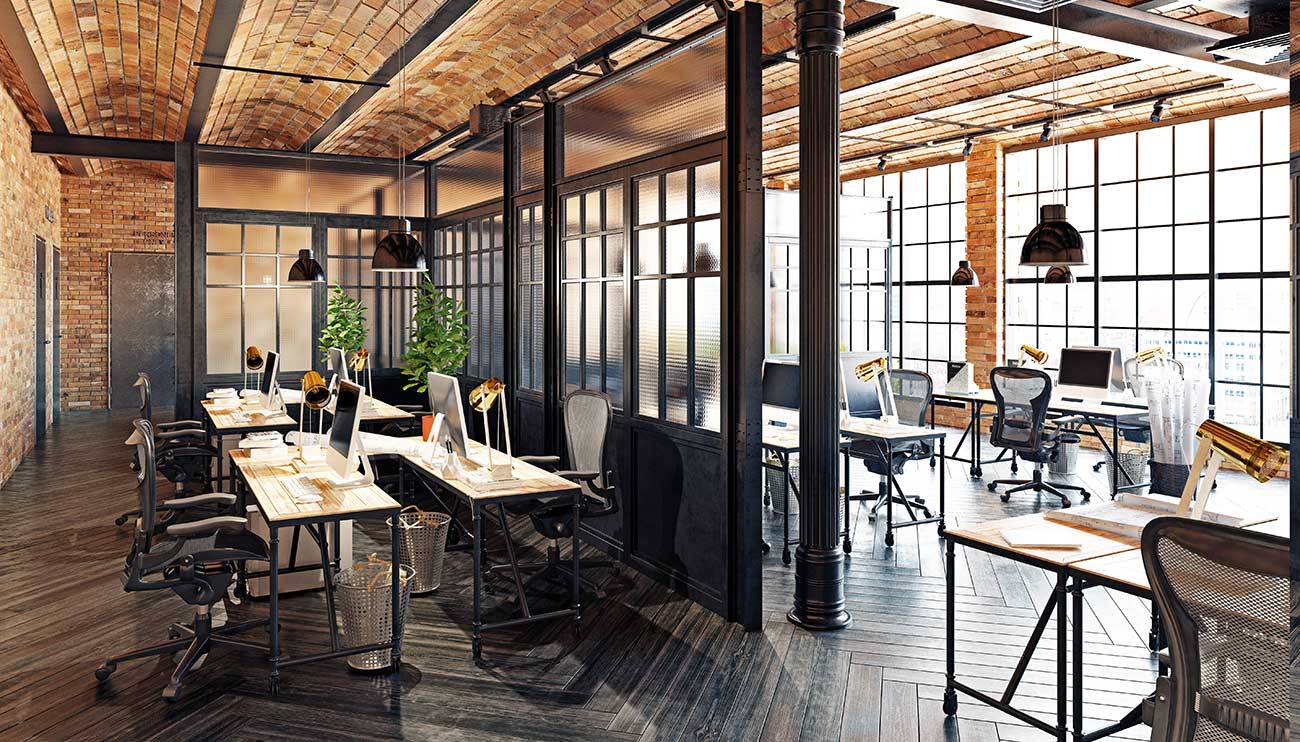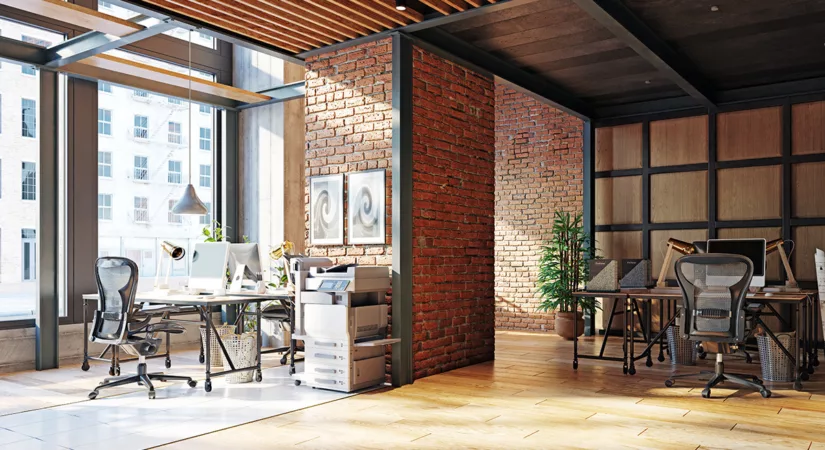The Pros and Cons of Common Office Layouts: Open Floor Plan vs. Cubicles vs. Cellular Offices
One of the biggest decisions in an office remodel is choosing a layout. There are three main layouts, though they can overlap some from room to room.
The three most common office layouts include:
- Open: One large room with various workstations and no separations aside from space between
- Cubical: Workstations in a large room are separated by partitions
- Cellular: Each employee has his or her own office
In this article, the pros and cons of each layout will be discussed, providing a guide for deciding which is best for your business and its needs.
Open Floor Plan Office Layouts
In an office with an open floor plan, there are no interior walls, doors, or partitions. Desks and workstations all occupy one large room, typically arranged to face each other.
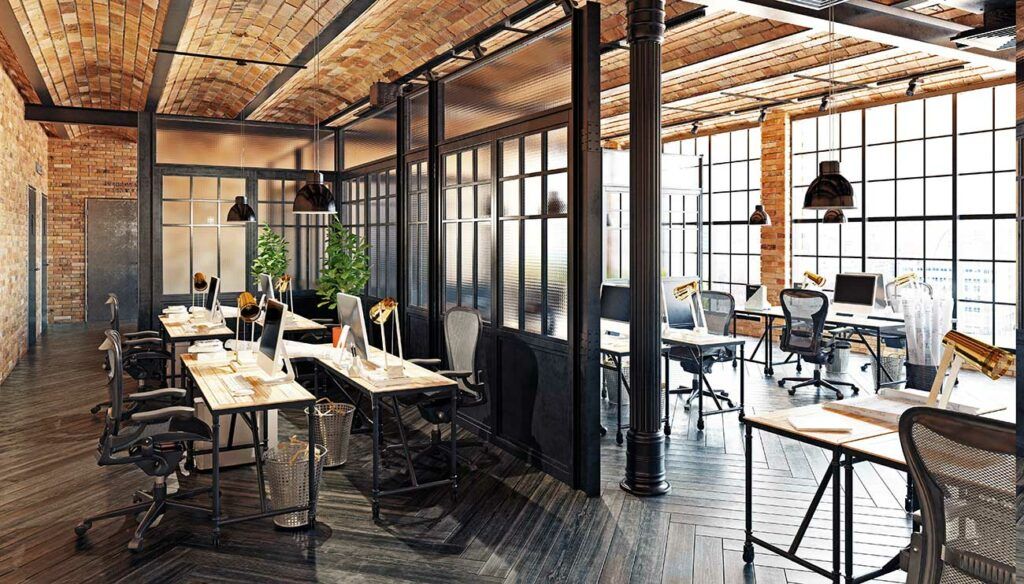
Open Floor Plan Pros
Open Floor Plans have many advantages. They are especially popular for startups and companies that need to promote more collaboration.
Economy
Eliminating the walls, doors, and partitions that might otherwise separate workstations or desks, provides more available space, therefore the space that the business operates in can be smaller, saving money on rent or mortgage, HVAC, and maintenance. In addition, there are fewer walls to paint and decorate.
Flexibility
With an open floor plan, creating more room for a particular workstation, or moving two departments closer to one another, is simply a matter of moving some furniture.
Unifying Aesthetic
When it comes to interior decor, colors, and lighting, the open floor plan makes it easy to execute a unifying theme. Carpeting, painting, lighting, and decorating become easier, since the design addresses a single, large room. Even the art on the walls can adhere to one aesthetic.
Collaboration
Promoting collaboration likely represents the dominant reason for choosing an open floor plan. Employees working on the same project have easy access to their teammates. They can get a quick answer to a question without typing an email or walking down the hallway to their teammate’s office.
Open Floor Plan Cons
While open floor plans seem like they win the day, a closer look reveals several potential drawbacks that should be kept in mind.
Noise Level
Clearly, there’s a reason why libraries have volume control etiquette. If everyone spoke at once, no one would be able to concentrate. The copier, printer, postal machine, and paper cutter can add to the volume. Without the walls or even partitions, the potential for disruptive noise levels increases drastically.
Fish Bowl
Removing the walls or partitions effectively removes any sense of privacy. Every phone call is heard by a number of other employees at adjacent workstations. Employees may feel they are being watched, making them self-conscious, or feel like they have to look busy at all times. Also, workers need to leave their work area to make or take a private phone call, or to have a private meeting with a supervisor or teammate.
Distractions
Trying to conduct a zoom meeting with offsite partners while a coworker at the next desk is making a sales call can be problematic.
Contagion
Contagion may not have made this list in 2019, but it’s now more top of mind. Germs can spread more easily in an environment without walls or even partitions.
Cubicle Office Layouts
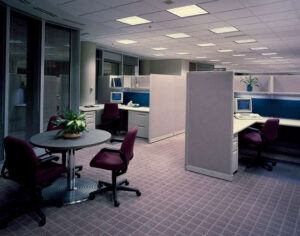
One of the most common configurations for an office layout is the cubicle model, where partitions, or low walls, divide a large room that would otherwise be a sea of desks or workstations.
Cubicle Office Pros
As a design that takes the cellular model closer to the open floor plan and the open floor plan closer to the individual offices model, the cubicle layout has advantages over each of the other designs.
Reduced distractions and noise
As compared to the open layout, the short walls or partitions reduce the noise level in the room, and cubicle occupants are less distracted by the comings and goings, phone calls, and other activities around them.
Economy
Again, compared to the open layout, the cubicle layout requires less space between desks or workstations, allowing more employees to fit into one large room. Reducing the square feet, reduces the overall expenses, as mentioned previously.
Versatility
A cubicle or modular layout that uses partitions allows for a variety of workspaces of different sizes within the same room. Different configurations can be achieved easily as workflows or compliment office changes, simply by moving the partitions.
Cubicle Office Cons
The cubicles have definite disadvantages that should be carefully considered. They have been around for a while, but have gotten a bad rap, even in pop culture. Employees may be left feeling like worker bees instead of assets in this setting.
Cramped
Employers may be delighted that they can fit more workers in a smaller space, but employees might feel a bit cramped. They may find they have less room to work and feel as though they don’t “rate” an office.
Limited Collaboration
With walls put up around each workstation, employees may be less likely to collaborate, which could affect their productivity as a whole.
Limited View
Especially for office workers staring at a screen all day, having somewhere else to look is important. Eye strain can be an issue when you don’t have a clear view of anything except what is right in front of you. In addition, having nowhere else to look can have a negative effect on employee morale.
Cellular Office Layouts
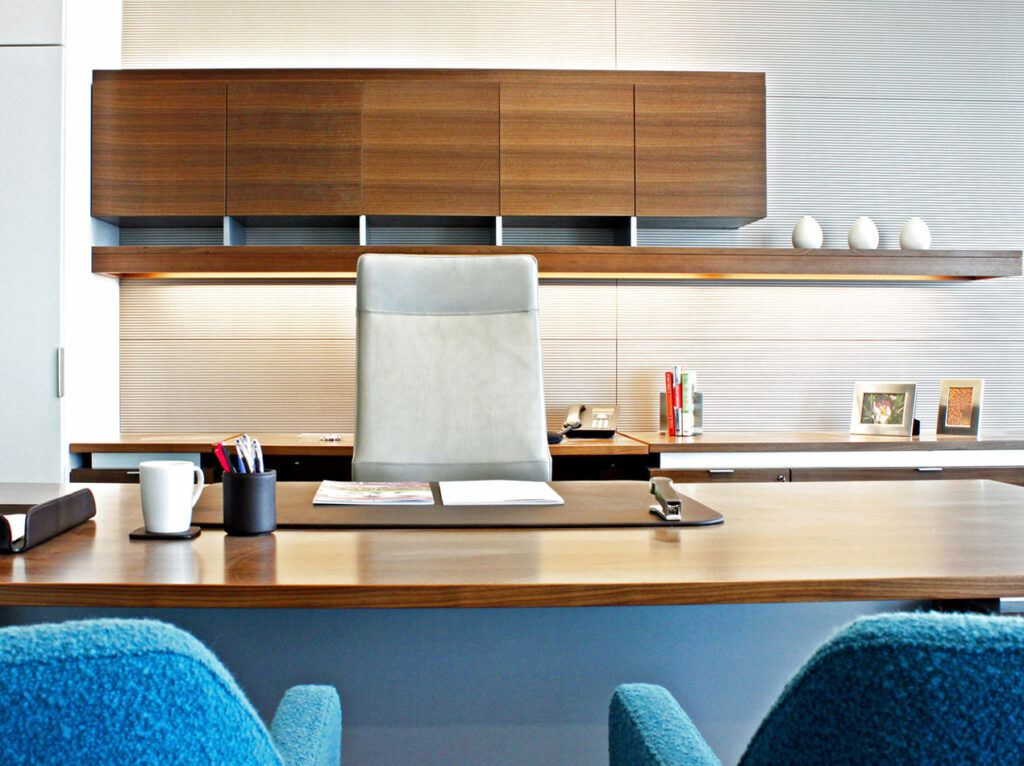
In the cellular office layout, everyone has an office with real walls and a door, with the exception of a lobby or reception area that is more open.
Cellular Office Pros
The advantages to having a real office, from the employee’s standpoint are clear. With an individual office, an employee has more:
- Privacy
- Quiet
- Workspace
- View
For certain industries, such as legal firms, medical offices, insurance brokers, or any type of industry requiring space for frequent private consultations with clients, there is no other choice.
From the viewpoint of the employer, offering a bigger office with a promotion can provide an extra, nonmonetary carrot to encourage employees to move up the ladder.
Cellular Office Cons
From the standpoint of the employer, this layout is the most expensive to provide, because it is the least space-efficient and requires more overall maintenance. It also limits collaboration, which can negatively impact productivity.
Is it Time for an Office Remodel?
Whether you have a startup that has outgrown the cowork space, a growing company that needs to expand, or maybe a space that has potential that you are now ready to realize, a remodel may be a key element to the next step in your organization’s path to success. Whichever layout you choose, it’s important to carefully choose a designer and builder, or better still, enjoy the advantages of working with a design-build firm.
For more than 10 years, DRF Builders has been meeting and exceeding the expectations of our clients. If you would like to learn more about our commercial remodeling design and construction services, please call or contact us online today!

